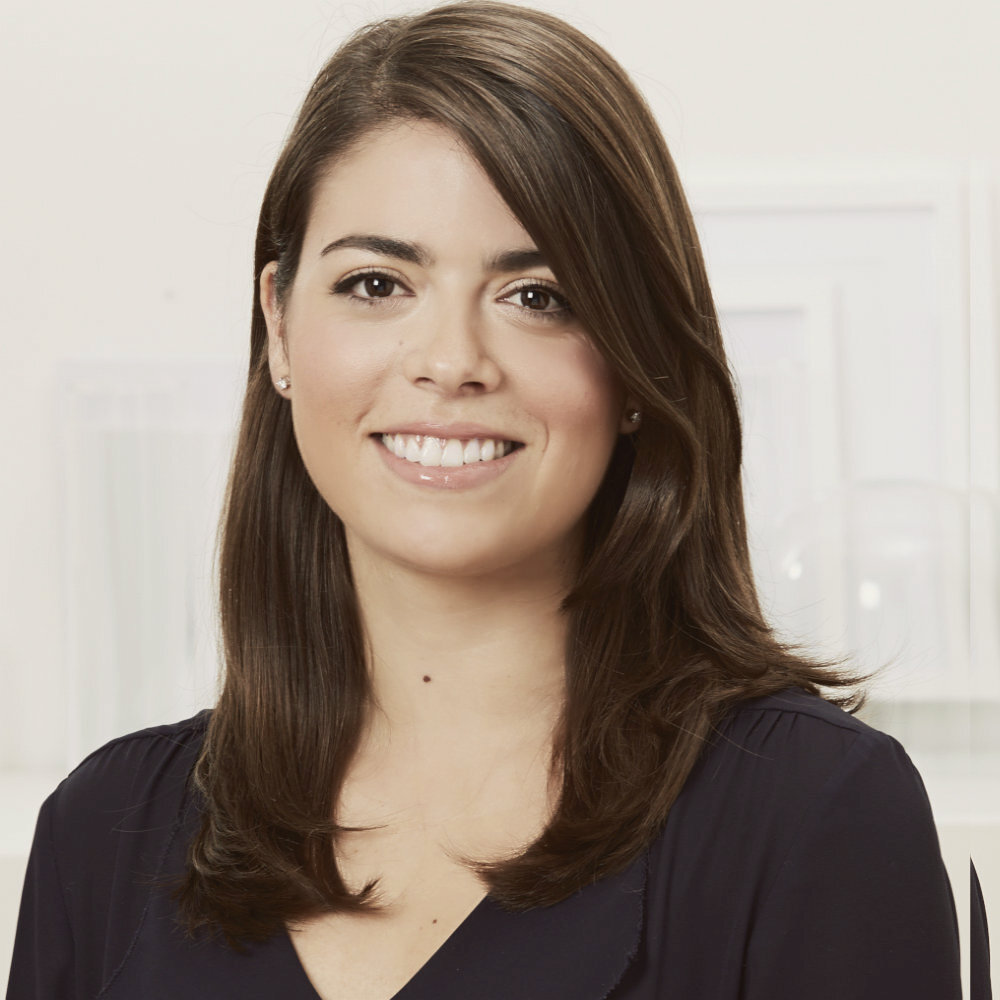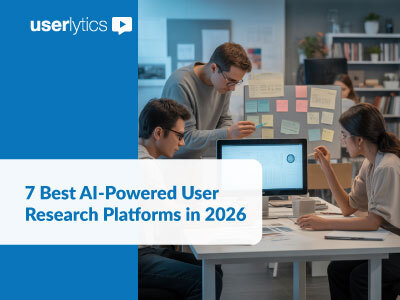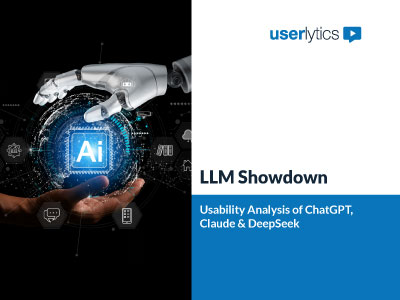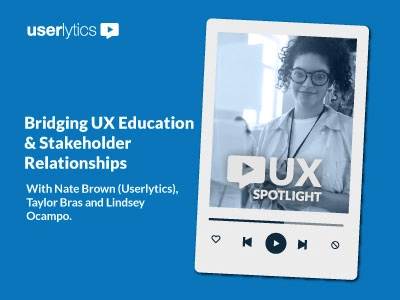How often does your product team talk to users? Not just to validate assumptions, but to deeply understand them? In the product world of tight deadlines and shifting business priorities, keeping your customer at the center can feel like a luxury. But it doesn’t have to be.
In a recent webinar, we sat down with two product research experts, Susan Liu, Senior User Researcher at Sage, and Dr. Kyle Gibson, UX Research Consultant and Anthropologist. Together, they offered insights on how they implemented the Continuous Discovery framework to create more meaningful products based on a consistent feedback loop with real users.
What followed was a series of thoughtful, transparent reflections about what works, what’s hard, and why a mindset shift is essential to excel with this methodology. Their stories revealed a path to embedding discovery into the day-to-day, not as a box to check, but as a rhythm that sustains innovation.
Challenges and Opportunities Implementing Continuous Discovery
When Susan’s team first considered Continuous Discovery, the framework developed by Product Discovery Coach Teresa Torres, it wasn’t the process that intimidated them—it was the unknowns. Would it be feasible to interview users so often? Could they sustain the effort without derailing timelines? These were the questions that loomed large. But rather than let hesitation stall them, they used it to their advantage.
“The biggest challenge we had to overcome is just overthinking it,” Susan explained. “That apprehension helped us devise a more strategic approach.”
Instead of diving in blindly, they built a plan: realistic, achievable, and tightly aligned with their goals. They carved out time for it, executed thoughtfully, and stayed committed. In doing so, they not only embraced a new methodology but actually reshaped how they worked together.
Meanwhile, Kyle’s team encountered a more human obstacle: nerves. Asking product managers to step into a user interview—especially with colleagues silently observing—wasn’t easy. “It’s not because they don’t want to,” Kyle said. “But it’s daunting if you’ve never done it before.”
His workaround was deceptively simple: make it personal. “It’ll just be them, me, and the participant. You just need to break the ice and realize that it’s just a conversation.” That approach, which started small, helped his former team at 1-800-flowers.com gradually normalize discovery, turning it from something intimidating into something empowering.
The real breakthrough, though, came when they began reflecting on what surprised them. Kyle described how they built reflection prompts directly into their FigJam boards: “Did anything violate your intuition?” he asked his team. The answers, he said, were gold. “Most discoveries aren’t Eureka moments—they’re ‘Huh, that’s interesting.’” Pay attention to those nudges.
Susan offered a parallel insight. Over time, she said, her team realized they had grown too focused on a narrow goal: conversion. “Sometimes we struggled to step back and have a wider conversation about the user’s journey.” If she could start over, she said, she’d spend more time defining the outcomes they hoped to influence and not just the metrics they wanted to hit.
As the two shared their real-world examples, a clear theme emerged: continuous discovery is not about doing more research so much as it is about creating more ‘connection.’ Susan’s team implemented bi-weekly interviews with designated team roles, debrief sessions, and one-page snapshots to keep stakeholders aligned. Kyle’s team iterated on onboarding flows and messaging based on real-time insights from users. For both, product discovery became less about phases and more about presence.
Why Continuous Discovery Matters
At its core, continuous discovery is a commitment to staying close to the people you serve. Susan captured this sentiment when she explained how her team approached the emotional context behind their users’ decisions. “It’s a methodology that is particularly effective for getting to the human need behind the experience,” she said. “It uncovers the emotional side of what is driving the individual.”
Over time, Susan’s team realized that continuous discovery wasn’t just helping them gather feature feedback so much as it was helping them understand the emotional journey behind user decisions. “Quite often when we’re crafting online experiences, it can be quite difficult to put yourself into the emotional experience of that interaction,” she noted. Because the approach is interview-based and participant-led, it naturally brought out deeper stories. “It helps us uncover the customer stories so that we get to know them better as people,” Susan said. That shift inspired the team to rethink how they organized and shared research.
“My team has been in place for 4 years and we carry out a wealth of user research. We wanted to theme our research in a way that told the story of the users from their perspective, as another way to inject that empathy into the solution creation process.”
Meanwhile, Kyle reflected on the constant balancing act between business goals and user research. Having come from academia, he acknowledged the luxury of time isn’t something industry allows. “But you can generalize findings,” he explained. “Take what you hear and run a survey—add numbers to it, make it real.”
Susan emphasized that moving from one-off research to iterative engagement also transformed her team’s collaboration. With designers, engineers, and marketers involved in sessions, alignment became organic.
And when the pressure to deliver loomed, the key was treating discovery not as a step, but a rhythm. “Don’t treat discovery as a phase,” Susan advised. “Make it a recurring part of the workflow.” Her team started small with just a few hours a week and built from there. Over time, they not only built knowledge but a great deal of momentum.
Habits and Skills for Continuous Discovery
Mastering continuous discovery doesn’t require a PhD, but it does require practice. Kyle believes the most essential skills are surprisingly simple: the ability to ask good, open-ended questions. And then, stay quiet. “The silent probe is the hardest part,” acknowledging that that’s space where insight lives.
Susan agreed, highlighting how difficult it can be to break free from scripted interviews. “You have to be genuinely curious about the person sitting in front of you,” she said. “That means letting their answers lead the conversation, not your checklist.”
But technique is only half the equation. What sustains discovery, Susan emphasized, is cadence. Her team created a rhythm of consistent customer engagement or what she called the “heartbeat” of the practice. “That regular cadence is incredibly powerful. It helps uncover opportunities for innovation and builds the confidence to pursue bold ideas.”
Both teams measure success differently, but intentionally. Susan’s group feeds research insights into A/B testing and personalization tools, quantifying impact through engagement metrics, satisfaction scores, and even revenue growth. Kyle, meanwhile, centers his team’s metrics around ‘people problems.’ “Every PRD (Product Requirements Document) starts out with, ‘What problem are you solving for people?'” he said. In that vein, he encourages teams with bandwidth to partner with their Data Science team to derive a metric that makes sense and iterate on that over time.
And in that direction, both teams found clarity. When faced with competing ideas or tough calls, discovery grounded their decisions in something tangible: the voice of the user.
Lessons from the Field: Q&A Insights
When the audience Q&A began, the conversation turned practical. How do you keep discovery agile without sacrificing depth? How do you avoid stakeholder overreaction to a single quote? And how can discovery serve not just the product, but the business?
Susan responded first. “Treat discovery as a team sport,” she said. Her team invites everyone to observe interviews and then gathers immediately after for a 30-minute debrief. “Even if we only produce a one-page snapshot, the insight is captured. And it’s all there: searchable, recorded, and ready to be shared.”
Kyle fielded a question about repeated users versus new participants. “It depends,” he said, but leaned toward diversity. “I like snapshot interviews. You get opposing views and that’s where the magic happens.”
Another attendee asked whether discovery could support business strategy, not just product. Sarita Saffon, Userlytics’ Principal UX Researcher, explained that continuous discovery applies just as powerfully to internal operations and process improvements. Whether teams are mapping out customer experiences or improving internal workflows, the key is the same: understanding people. When you engage the individuals behind the process, whether customers or employees, you surface insights that lead to better business outcomes.
Managing stakeholder expectations was a theme both Susan and Kyle returned to with practical wisdom and firsthand experience. If a leader wants to act on a single insight, Kyle said, it’s important to contextualize. “One interview isn’t capital-R Research. Use surveys or a follow-up panel to confirm patterns.”
Susan agreed, adding that her team built a user needs repository to help decision-makers access validated insights anytime. “That moved us from research being just a validator to something that inspires solutions.”
And when bias came up? Kyle didn’t hesitate to add: “Bias is always there. But with enough interviews, triangulation, and careful question design, you get direction. That’s what product teams need.”
When asked about final advice, Susan’s was simple: “Just get started. If you believe in the methodology, start small and make it a habit.” Kyle added, “Schedule your sessions. Make them routine. Do them every Friday if that works.” The key is to simply start.
Mindset as the Foundation of Continuous Discovery
While tools and techniques matter, Sarita reminded us that the true power of continuous discovery lies in how it shifts a team’s mindset. It’s not just about optimizing research but also about reshaping how decisions are made, how empathy is cultivated, and how people across an organization see their role in understanding users.
“You’re not just improving your UX,” she said. “You’re changing the way your team thinks; about people, about problems, and about what it means to build something meaningful.”
That kind of shift doesn’t happen overnight. As each emphasized, it starts with just one conversation. And then another. And another. Until discovery becomes not just something you do, but something your team lives.
Ready to Bring Continuous Discovery Into Your Workflow?
Continuous discovery isn’t just a framework but a path for product teams that provides clarity to prioritize, confidence to act, and the empathy to design solutions that resonate with users. If you’re ready to make it part of your team’s DNA, Userlytics can help you get started.
As Susan put it, “Userlytics has been an invaluable operational partner throughout.” Her team leaned on the platform not just for participant recruitment, but for making sure those sessions ran smoothly, consistently, and with minimal overhead. “The Special Ops recruitment service is invaluable. Without it, we wouldn’t be able to run as many smooth user research sessions as we do.”
Whether you’re setting up bi-weekly interviews or pulling insights into your delivery pipeline, Userlytics helps remove the friction from discovery.
Learn more about our Continuous Discovery Service.
Liliana Camacho

Liliana leads content marketing initiatives across Userlytics. With over a decade experience in B2B SaaS, with a focus in content writing, she’s passionate about the craft of corporate storytelling and thought leadership. She holds a degree in English Language and Literature from Western University in Canada.
Free Demo



